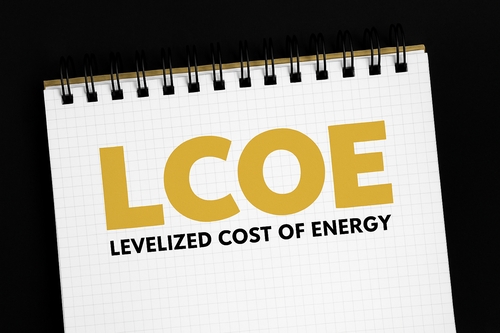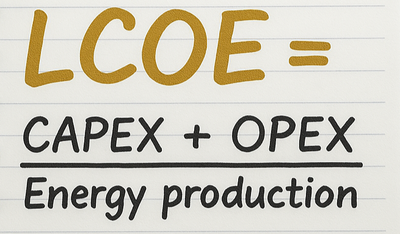LCOE vs. Cost per Watt: What Really Matters for Commercial Flat Roof Solar?
22 July 2025

Many solar developers treat energy yield and cost as separate equations. But in commercial flat-roof solar projects, the Levelized Cost of Energy (LCOE) is where it all converges. LCOE isn't just a spreadsheet metric—it's the ultimate measure of long-term system performance, and it's directly shaped by your structural choices.
Too often, the racking system is considered a commodity. In reality, it can make or break your ability to optimize LCOE—not just by reducing upfront costs, but by enabling more energy production and lower long-term maintenance.
Today, the solar market is shifting. As Inflation Reduction Act (IRA) incentives face political uncertainty and timelines tighten, developers can no longer rely on subsidies to protect thin project margins. The old “cost per watt” logic, focused only on reducing initial capex, is becoming outdated. Instead, the focus is moving to cost per kWh over time—in other words, LCOE.
And in this evolving landscape of power purchase agreements (PPAs), net metering adjustments, and ESG-aligned capital, LCOE becomes more than a technical benchmark—it becomes a strategic sales lever. It's how you demonstrate real financial value, long-term performance, and investment-grade engineering in a single metric.
LCOE: More Than Just a Financial Metric

To understand how structural decisions impact LCOE, let's break it down into its two main components:
CAPEX (Capital Expenditures)
Upfront costs incurred before the system produces energy:
-
Modules, inverters, racking, BoS
-
Engineering and permitting
-
Installation labor
OPEX (Operational Expenditures)
Recurring costs over 25+ years of operation:
-
Maintenance and repairs
-
Monitoring
-
Insurance
Structural Design Choices That Lower LCOE
While some focus purely on reducing upfront cost per watt, the real LCOE gains come from smarter structural design that improves yield and lowers maintenance costs.
Reduce CAPEX
-
30% faster installation with fewer parts and pre-assembled components
-
No wind deflectors = less material handling
-
Fewer roof penetrations thanks to rail-based design
➡️ Want to understand wind and how it is studied in our industry? Read: Wind Tunnel Studies for Flat Roof Solar Structures: What, How and Why
Increase Energy Yield
Up to +30% more energy with optimized tilt, bifacial gain, and cooling airflow
Better winter production thanks to elevated structures that shed snow and exploit albedo
➡️ Discover how racking influences performance: Read: Bifacial Gain and Albedo: How Smart Racking Design Captures More Sunlight
Lower O&M Costs
-
Faster inspections and cleaning with open, accessible designs
-
Less fatigue, fewer safety risks, fewer errors on site
-
Extended membrane life = lower total building maintenance costs
➡️ Explore how structure affects long-term O&M in our article: Solar Panel Cleaning and Maintenance: Why Access Matters
LCOE Optimization Starts with Feasibility
''The most expensive solar project is the one that is developed but never gets built.''
Up to 40% of commercial flat roofs face structural limitations. Too often, a good project dies at the structural roof assessment stage—not because solar is impossible, but because the racking system can't adapt.
With adapted racking:
-
Load is distributed across beams and purlins
-
Ultra-flexible designs are custom-engineered
-
Up to 80% more projects can proceed without major roof reinforcement
➡️ Learn more about limited roof capacity in this article: Low Load-Bearing Flat Roofs: How the Right Racking Enables Smart Project Management
Lower LCOE. Higher ROI. Fewer surprises.
It's more than a slogan. It's the foundation of a successful solar project:
-
A lower LCOE reflects smarter design, optimized installation, and higher yield.
-
A higher ROI means every dollar invested today returns more energy and value over time.
-
And fewer surprises means fewer redesigns, fewer structural issues, and fewer delays on site.
With the right racking systems, LCOE is not an afterthought—it is designed into every beam, every tilt, every decision. Because when structure and strategy align, your solar project does not just work—it outperforms.